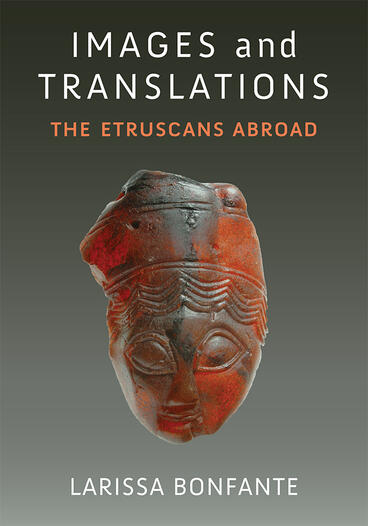Images and Translations
The Etruscans Abroad
A lively journey to meet the Etruscans, one of Europe’s most enigmatic societies, by world-renowned archaeologist Larissa Bonfante
Description
Professor Larissa Bonfante’s great gift was the ability to evoke, in a fresh, immediate, and convincing way, the experiences, beliefs, and thoughts of people living more than two thousand years ago. Her final publication, Images and Translations: The Etruscans Abroad, communicates the sensations of other times and places, from the day-to-day to the solemnly ritualistic.
The world of the Etruscans, sophisticated and pleasure-loving, radiated throughout a vast area of the ancient world – a world very different from our own. Relying on a wealth of creative works, Images and Translations examines the expertise and productions of the artists who made them, the tastes of those who used them, and the sometimes surprising results of the exchanges between creators and buyers. Just as the French demand for Chinese ceramics in the seventeenth century gave birth to the unprecedented famille colors, so the production of Greek ceramics for the Etruscan market produced singularly expressive depictions. Humorous, pious, or erotic to the buyers, they could be shocking to the culture that made them.
Images and Translations explores areas in much closer economic and cultural contact than is usually recognized. The volume finds threads of connection not only between Italy and Greece, but between Italy and northern Europe—today’s France and Germany—as well as between Italy and the Near East. Etruscan influence runs through Western history, into the Renaissance, and emerges in imagery still evocative today.
Larissa Bonfante was Professor of Classics Emerita at New York University.
Reviews
“In this brilliant volume, Bonfante reminds us that the scope and influence of the Etruscan people were far greater than that reflected in mere literature of their Greek and Latin counterparts. With a perspective gained over a vibrant career, we see here the essential interconnectedness of the people of central Italy with wider communities of the ancient Mediterranean and European worlds.”
—Anthony Tuck, University of Massachusetts Amherst
- Anthony Tuck
“Images and Translations is a tour de force that compellingly presents the Etruscans as an influential cultural force in the Mediterranean and in Northern Europe. Bonfante has long advocated the view that the Etruscans were not a passive society that simply absorbed Greek and other influences. In this book she effectively demonstrates that the visual record reveals far more than most earlier scholars have recognized. She proceeds through careful analysis of the artistic evidence, inscriptions, Greek and Roman literary sources, and geographic factors, to show that the Etruscans were in constant contact with other cultures, and that their artworks and customs transformed ‘imported’ visual images to suit their cultural needs.”
—Elaine Gazda, University of Michigan
- Elaine Gazda

